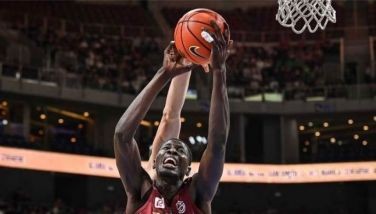Josephine, the play
This year being Rizal’s, my 1978 play “Josephine” is enjoying a revival. Allow me to be immodest today and advertise two current productions of the play. I will quote from their press releases.
The play has become part of a new musical in the United States:
“‘Rizal’s Sweet Stranger, the Musical (Untold Stories of Josephine Bracken)’ will be produced in Chicago by the SamaSama Project and Circa-Pintig.
“This is a collaborative text, conceived, reconstructed, written, and directed by Anton Juan Jr., incorporating other texts from Anril Tiatco’s ‘Miss Dulce Estranjera’ and Isagani Cruz’s ‘Josephine,’ as well as extrapolations of other historical texts and documents. The music is composed by Cleofe Guangko Casambre and William Elvin Manzano.
“Playtimes are Sept. 23 at 7:30 p.m. and Sept. 24 at 2 p.m. and 7 p.m. at the St. Scholastica Academy Theater, 7416 N Ridge Blvd., Chicago, IL 60645. Gala Night reception is on Sept 24 at 6 p.m.”
Closer to home is a new production of the play by its original director:
“The Angeles University Foundation (AUF) Repertory Theater, under the direction of Tony Mabesa, presents ‘Rizal – Recuerdos de Amor,’ featuring two plays: Allan Palileo’s ‘Nellie’ and Isagani Cruz’s ‘Josephine.’ These two plays focus on the two great loves of Rizal – the English girl Nellie Boustead and the Eurasian Josephine Bracken.
“Performances will be held at St. Cecilia’s Auditorium, in the AUF main campus in Angeles, Pampanga. The scheduled playtimes are 3 p.m. and 6 p.m. on Sept. 26, Sept. 27, Oct. 3, Oct. 4, and Oct. 5.”
The two productions are really versions or adaptations, in the time-honored tradition of directors stamping their genius on dramatic texts.
Here are excerpts from my “Playwright’s Notes” for the Angeles production:
“Josephine” is my favorite among the 36 plays that I have written. It took me five years in three countries to complete it.
In 1974 as a part-time instructor working for my doctorate at the University of Maryland, I saw in my mind a woman standing alone downstage and suddenly transforming into her past self (now the first scene in “Josephine”). At that time, the new Kennedy Center in Washington, D.C., had announced a competition for plays by Washington-based playwrights. Emily Dickinson was (still is) my favorite poet, and I wanted to compete with a play based on her life and writings.
Before I could find time to write the play while finishing my dissertation, however, William Luce wrote “The Belle of Amherst” in 1976, the extremely successful and Tony Award-winning one-woman play starring Julie Harris. (Irrelevant but memorable: I attended a reading by Julie Harris in a small church in London in 1988 while I was a Visiting Fellow in Oxford. I couldn’t help but tell myself that this was the woman who stole Emily Dickinson from me.)
After Maryland, I became an OFW in Ahwaz, Iran. (I was referred to as “the Filipino professor who taught American literature in Iran.”) Although I had already talked initially with an agent in Washington, D.C., I stopped writing my script because I knew I could not compete with Luce. I kept the first scene in my mind, however, and continued imagining other scenes with an actress that looked like Emily Dickinson (these scenes are now also in “Josephine”).
When I returned to the Philippines in 1977, I taught in the English Department of the University of the Philippines in Diliman. At UP, I met Tony Mabesa, who kindly asked me to write a script on Rizal for Dulaang UP. I immediately realized that I could transform Emily Dickinson into Josephine Bracken. But I did not want to write just another Rizal play. I wanted to make Josephine a much more literate and articulate person than the simple-minded, even sex object “dulce extranjera” that the Rizal biographies make her out to be. Since there was very little then about her, except for an autobiography that was not really hers, I had to flesh her out by making her the model for women like her.
That made me turn to the transformational theater then popular in New York. I like to pride myself on being the first to do transformational writing in the Philippines. Tony, who was even more knowledgeable about theater than I was, having come from his own studies abroad, fortunately knew what I was trying to do.
He staged the first night exactly as I wrote the play. Then he did what any good stage director does and should do. In succeeding performances, he changed the play to make it work with Philippine audiences and under Philippine conditions.
I look at Tony Mabesa as one of my two mentors in theater. (The other one is Cecile Guidote Alvarez, who took me in as a Resident Playwright of the Kalinangan Ensemble of the then-young Philippine Educational Theater Association in 1970, before I went abroad for studies.) After my return, I worked mainly with Tony Mabesa, who was and is very different from Cecile Alvarez. Between the two of them, I learned everything I now know as a playwright. I dedicated my first book of plays, “Josephine at Iba Pang Dula” to the two of them.
“Josephine” is mostly Tony Mabesa, with a little bit of me, Josephine Bracken, Jose Rizal, some women I know, and yes, Emily Dickinson.
- Latest




























